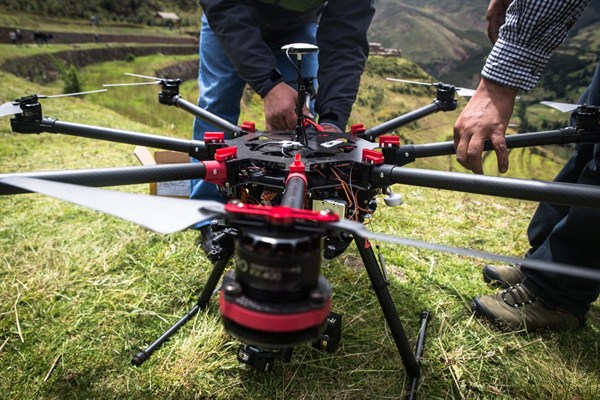They’ve gone from little-known hobby toys and military machines to an international phenomenon, with eager civilians snapping them up from China to Colombia: Whatever you may personally think of them, unmanned aerial vehicles, or drones, are here to stay. Civilian-focused drones are already proving profitable in the private sector, with sales exceeding an estimated 1 million units in the U.S. and companies from movie studios to construction firms working to integrate the devices into their work.
The development sector is also starting to utilize drone technology, for uses ranging from quick post-disaster mapping and documenting environmental abuses to property surveillance. While the use of development drones remains decidedly novel, these devices are likely to become more and more common in the near future. This article, based on research I carried out for New America’s Drones and Aerial Observation primer, will summarize how civilian drones work and collect data, and how they are currently being used in the development sector.
How Do Drones Work?
To start, it’s important to put aside one common misconception: that all drones are derived from, and have similar capacities to, those used by the U.S. military in conflict zones. In reality, civilian drones have very little resemblance to the enormous Predator and Reaper devices deployed to the Middle East.

